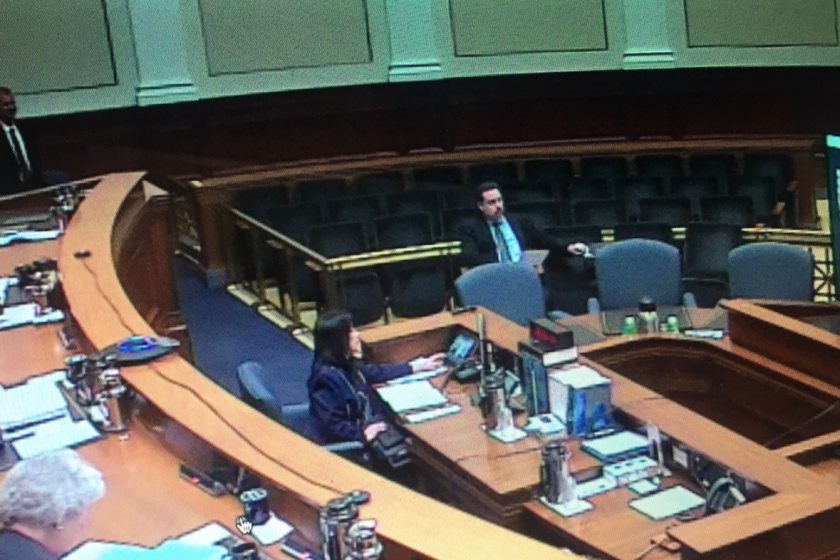Op-Ed: California halted executions, now it should abolish the death penalty

- Share via
It has been five years since California voters approved Proposition 66, a measure that ostensibly was going to speed up the time between handing down a death sentence and an execution. But as a practical matter, nothing has really changed. In fact, it has been 15 years since California last executed someone, leaving us with a Death Row population of nearly 700 people, none of whom face execution in the foreseeable future.
So much for the fix that death penalty advocates promised. Here’s a better one: End the death penalty in California once and for all.
Of course, there are stronger reasons for getting rid of capital punishment than the slowness of the legal process. The moral arguments align against killing even convicted murderers, and a legal system as imperfect as ours has proved to be should never be used to determine whether someone lives or dies. In fact, the California Committee on Revision of the Penal Code finalized a report last month calling for abolition primarily because “the death penalty as created and enforced in California has not and cannot ensure justice and fairness for all Californians.”
“More than forty years of experience have shown that the death penalty is the opposite of a simple and rational scheme,” the Committee on Revision of the Penal Code concluded. “It has become so complicated and costly that it takes decades for cases to be fully resolved and it is imposed so arbitrarily — and in such a discriminatory fashion — that it cannot be called rational, fair, or constitutional.”
A Kern County Superior Court judge last week ordered that a 68-year-old former farmworker, Vicente Benavides Figueroa, be released from San Quentin’s death row after the local district attorney declared she would not retry him.
Capital punishment magnifies broader racial and class divides in the United States. Death sentences fall disproportionately on Black and Latino defendants, and on the poor. It’s no accident of history that former slave states cling stubbornly to this barbaric sentence. And capital punishment is applied inconsistently. For instance, whether to seek a death sentence depends on the views of local prosecutors, so a murder charge filed under California law might be deemed a capital offense in one county but not in a neighboring jurisdiction. That can’t be called justice.
Since 1978, according to the office of the state public defender, California juries have handed down more than 1,000 death sentences. Over those 43 years, only 13 of the condemned have been executed (two more were put to death in other states for convictions there). More than 235 of the condemned have had their sentences reversed, which means at least one in five death sentences or convictions were legally flawed, with hundreds more appeals in other cases still pending. A parade of death row exonerations nationwide has made more people aware of how susceptible the legal system is to manipulation by law enforcement and prosecutors, and by witnesses who are either mistaken or who lie.
That’s a failed justice system. And when the final step in the process is an execution, the potential for putting the innocent to death is unconscionable. It’s remarkable that so many conservatives support such an expensive exertion of government power over the individual (let alone believe the government can get capital punishment right), though it’s heartening that in recent years more conservatives have joined the call for abolition.
Despite an entreaty from Gov. Gavin Newsom, the California Supreme Court has refused to overturn hundreds, if not all, death sentences in the state.
One of California’s more vocal opponents of the death penalty is Gov. Gavin Newsom, whose personal convictions on the issue led him in March 2019 to declare a moratorium on executions. He also shut down the unused execution chamber at San Quentin and withdrew the state’s lethal injection protocol, leaving the state with no place and no method for carrying out death sentences. If Newsom wins reelection next year — he just breezed through a recall and faces no current significant opposition — his moratorium can continue until his successor takes office in January 2027.
Unfortunately, a gubernatorial pledge of inaction is not a solution. California voters affirmed capital punishment in a 1972 initiative, so it is up to them to get rid of it. And yes, voters have been asked to do this before, and declined. When they approved Proposition 66 five years ago, they also rejected the alternative Proposition 62, which would have ended capital punishment.
But public sentiment has been changing. A UC Berkeley Institute of Governmental Studies poll in May found that 44% of those surveyed said they would vote to repeal the death penalty and only 35% said they would keep it, with 21% undecided. If those undecided voters split evenly, the poll suggests repeal is possible.
So the ground is prepared for another initiative to end this inhumane and unjust practice. Over the next few months Newsom should work with legislative leaders to move a bill introduced by Assemblyman Marc Levine (D-Greenbrae), to put the issue before the voters once again in 2024. And then Newsom should use his political capital to persuade Californians that ending the death penalty is the right thing to do.
Irvine-based author Scott Martelle is a former member of The Times editorial board.
More to Read
A cure for the common opinion
Get thought-provoking perspectives with our weekly newsletter.
You may occasionally receive promotional content from the Los Angeles Times.










